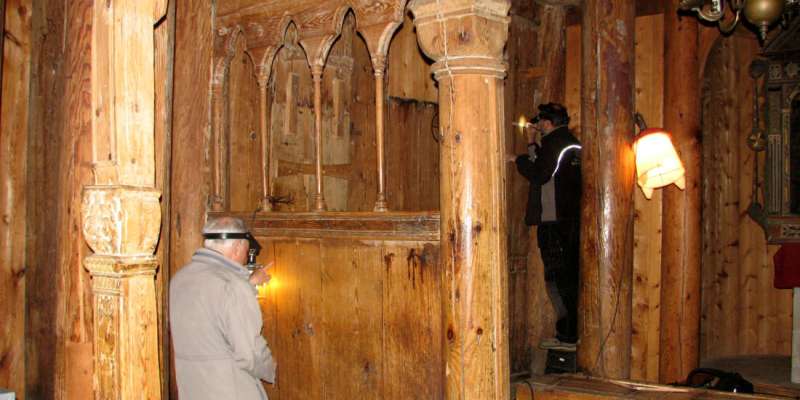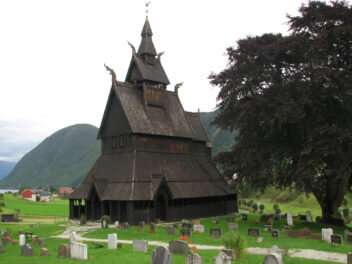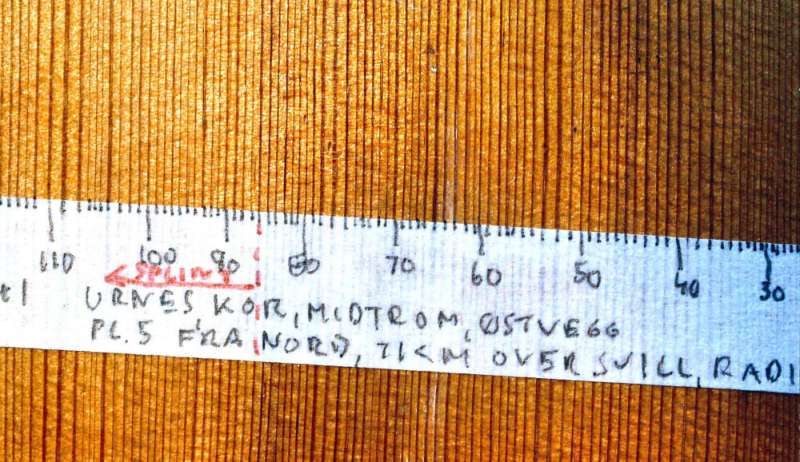Stave churches in Norway older than previously believed

What's the real age of Norwegian stave churches?
The usual method for dating wood is to measure the variation in the width of the tree rings and compare them to already dated samples.
Recently, researchers have used a different measurement method called photodendrometry.
With this technique, the material can be photographed in place. The method has the advantage of not needing to take core samples, and scientists can photograph large amounts of material in a protected building and procure larger amounts of data. This provides more precise knowledge of the estimated construction date, because it allows wood that cannot be core sampled to also be dated.
Through the Stave Church Preservation program headed by the Norwegian Directorate for Cultural Heritage, dendrochronologists at NTNU received money to study the country's stave churches more closely. The program has yielded results.
"We now know the age of some stave churches almost to the year," says Terje Thun. He is an associate professor at the NTNU University Museum in Trondheim. Thun is one of the country's foremost experts in dendrochronology, or tree ring dating.
Photodendrometry less invasive
Thun explains that the original dating method of measuring tree rings with a magnifying glass has some limitations. If tree rings cannot be measured on the surface or end of a plank or log, then researchers need core samples. This is not always possible—or desirable.
During the stave church program, photodendrometry was tested as a non-destructive method. The researchers photographed the wall boards in various churches, and did the actual measuring of the tree rings in the laboratory with the photos.
"In this way, researchers were able to examine all parts of the stave churches without any invasive techniques," Thun said.

Urnes Stave Church older than assumed
Over a long research career, Thun has studied wood samples from stave churches in order to more accurately pinpoint Norway's most important contribution to world architecture.
The stave church preservation program, which lasted until 2016, accelerated that research. Thun and his staff were able to conduct more systematic analyses of various building sections in several of the churches.
"Urnes Stave Church was especially thoroughly studied, since it's considered to be the oldest stave church in Norway," says Thun.
He and several of his colleagues and researchers in Norway and Denmark can now confirm that several of the churches are older than many historians previously believed.
Dendrodating indicates that part of Urnes Stave Church, which was estimated built before 1100, was constructed using timber from 1069 and 1070. The slightly younger part of Urnes is dated to 1129-1130.
For the sake of clarity: dendrochronology can date the year a tree was felled for the stave churches. The likelihood is that the felling year was also when the construction began.
Several stave churches older than presumed
According to Thun, Urnes Stave Church is interesting in several ways.
Already in the 1950s, archaeological excavations were being carried out to learn more about this special church at the head of the Sognefjord. Norway's oldest stave church is also on the UNESCO World Heritage list, and many books have been written about the unique church building.
"Research has been done on the stave churches in the past, too, but not as systematically as under the stave church program. Over the years, dating estimates were based on construction technique and style and spanned almost a hundred years.
"Now we're sure of the age, and several of our stave churches are older than first thought," Thun says.
Researchers thoroughly examined the stave churches in Kaupanger, Hoppestad and Urnes using photodendrometry. Some parts of the Gol and Borgund stave churches were also documented using the same method.

The work of dating the stave churches has also given the researchers knowledge of building practices and material choices.
"Among other things, we can now study what kinds of forests were available at different periods," Thun says.
The preparatory work of the stave church program showed that many of the churches had serious construction problems and required a great deal of maintenance. So building historians, art historians, conservators, archaeologists, craftsmen and other professional groups were all involved in the project.
Dendrochronology method can tell us about climate
Thun's colleague, researcher Helene Løvstrand Svarva, also participated in the stave church program.
They both work at The National Laboratory for Age Determination that is part of the NTNU University Museum in Trondheim.
Svarva is particularly concerned with how climate can be studied using dendrochronology.
"Dendroclimatology is a major field of study, and here in Northern Europe we can use the trees' response to summer temperatures to find out more about climate variations over time," she says.
According to the researcher, the tree-ring chronology of the stave churches covers a climatically interesting period, which is often called the Medieval Climate Anomaly. This was a period that was assumed to be warmer than the periods before and after.
By comparing summer temperatures over time, Svarva can find out how the climate has changed throughout history.
"Long chronologies allow us to see variations over time that can give us a picture of how temperatures have changed. It's especially interesting to find out how today's climate can be seen in light of the climate almost a thousand years ago," she says.
But, Svarva points out, "trees are also affected by forces other than temperature, so we need a lot of trees as a source. We also need chronologies from many parts of the world to create a picture of how temperature has changed in time and space."
Provided by Norwegian University of Science and Technology



















